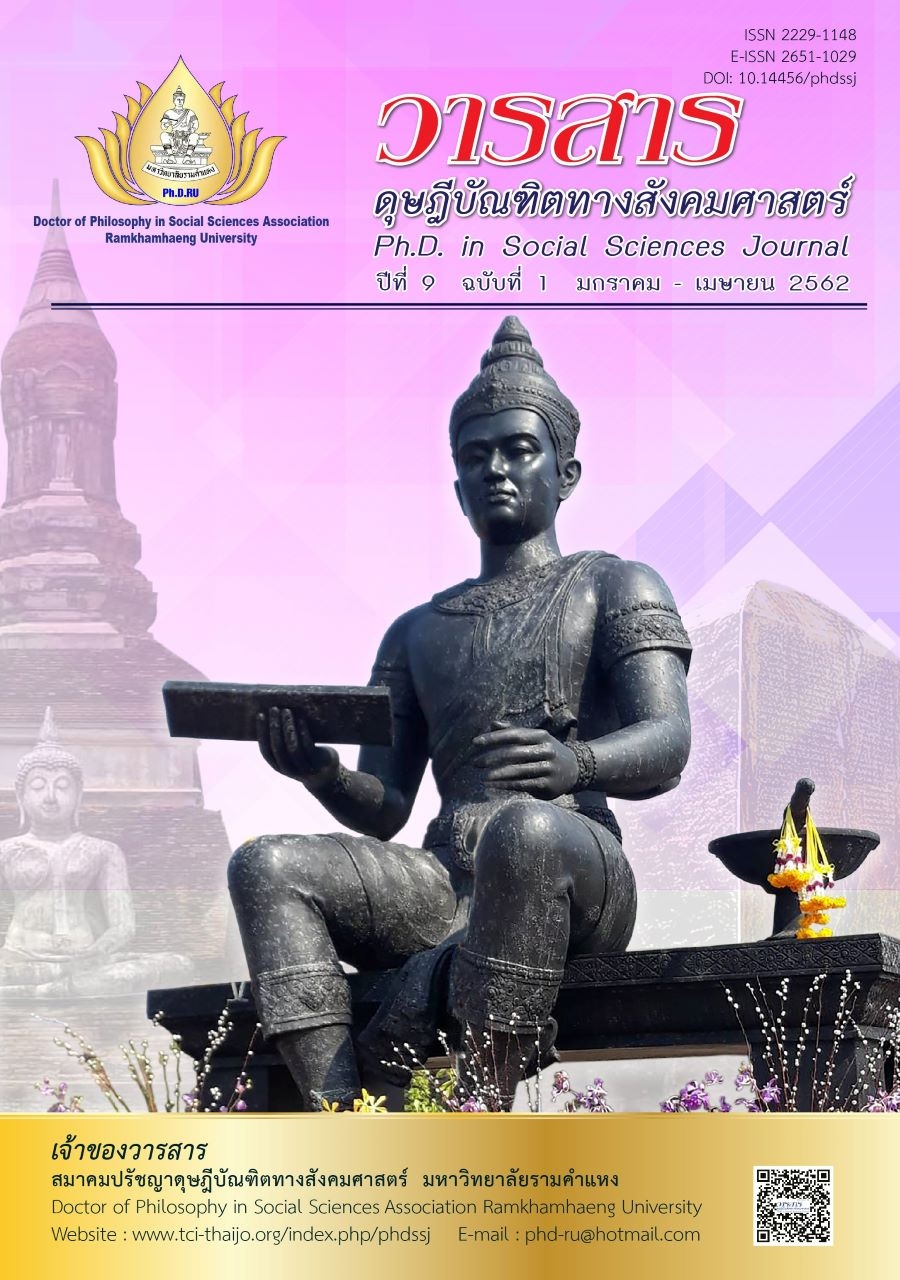Business Continuity Management for Logistics Service Provider
Main Article Content
Abstract
The purposes of this research were to: (1) study the characteristics of management leadership and management support and business continuity management of logistics service providers, (2) study the factors of management leadership and management support in various levels of business continuity management of logistics service providers., and (3) study the management leadership and management support in relation to business continuity management of logistics service providers. The research population were 142 companies of the logistics service provider in Thai Air Freight Forwarders Association (TAFA). The research consisted of quantitative research and qualitative research, Questionnaires were used as data collection tools for quantitative research while In-Depth interviews were data collection tools for qualitative research. The t-test analysis used to determine whether the difference between management leadership and management support to business continuity management for logistics service provider and Chi-Square was applied for testing relationships between management leadership and management support to business continuity management for logistics service provider by 351 number of samples.
The results of this research found that:
1. Leadership characteristic of management has an average level of operation in very high. Executive support characteristic has an average level of operation in very high. A Business continuity management characteristic has mean of operation in moderate level.
2. The results of this research found that the levels of management leadership and management support differ in the success level of the business continuity management of different logistics service providers.
3. the level of management leadership and management support were related in the same direction to the level of success in business continuity management, statistically significant at the level of 0.05.
Article Details
Academic articles, research articles, and book reviews in the Ph.D. in Social Sciences Journal are author’s opinions, and not the publisher’s, and is not the responsibility of the Ph.D. in Social Sciences Journal Philosophy Association, Ramkhamhaeng University. (In the case that research is done on human, the researcher has to be trained in Ethics for Doing Research on Human Training and has to produce the evidence of the training).
References
Bass, B. M., & Avolio, B. J. (1994). Improving organization effectiveness through transformational leadership. Thousand Oaks: CA: Sage.
Eshaq, M. A., & Shaar, A. L. (2015). The effect of top management support on innovation: The mediating role of synergy between organizational structure and information technology. International Review of Management and Business Research, 4(2), 499-513.
Hoy, W. K., & Miskel, C. G. (1991). Educational administration: Theory research practice (4th ed.). Singapore: McGraw-Hill.
International Organization for Standardization. (2013). ISO 22301:2012 Societal security-business continuity management systems-requirement. Geneva, Switzerland: International Organization for Standardization. [In Thai]
Jacobsen, G., & Kerr, S. (2011). Crisis Management, emergency management, BCM, DR.: What’s the difference and how do they fit together? In A. Hiles (Ed.), The definitive handbook of business continuity management (3rd ed., pp.97-106). New York: John Wiley & Sons.
Jitpaiboon, T., & Kalaian, S. A. (2005). Analyzing the effect of top management support on Information System (IS) performance across organizations and industries using hierarchical linear modeling. Journal of International Information Management, 14(2), 5. [In Thai]
Inwang, K. (2013). An academic leadership developmental model by knowledge management of executives from private universities. Journal of Business Administration, The Association of Private Higher Education Institutions of Thailand, 6(1), 114-129. [In Thai]
Inwang, K. (2015). Modern management. Bangkok: Western University Press. [In Thai]
Inwang, K ., Inwang, S., Buddhabhumbhitak, W., & Somboonpol, U. (2017). The moving professional personnel in tourism and medical to work among ASEAN countries. Western University Research Journal of Humanities and Social Science, 3(2), 44-53. [In Thai]
Kitikul, N. (2008). Organization and management. Nakhon Pathom: Kasem Printing Group . [In Thai]
Ministry of Industry Announcement. (2008). International organization for standardization 22301: 2012. Bangkok: Author. [In Thai]
Nunuy, N. A. (2015). Top management support and user’s competency on the accounting information systems’ quality. Ijaber, 13(6), 4049-4055.
Office of the National Economic and Social Development Council. (2014). Thailand economic overview 1997, Office of the National Economic and Social Development Board. Retrieved November 30, 2018, from https://www.nesdb.go.th/default.aspx?tabid=218 [In Thai]
Rhoades, L., & Eisenberger, R. (2002). Perceived organizational support: A review of the literature. Journal of Applied Psychology, 87(4), 698-714.
Robbins, S. P., & Decenzo, D. A. (2004). Management (6th ed.). San Diego, CA: Prentice Hall.
Sri Dewi, A. (2015). The effect of top management support and internal control of the accounting information systems quality and its implications on the accounting information quality. Information Management and Business Review, 7(3), 93-102.
Thongruang, T. (2015). Factors affecting business continuity management for manufacturing industries of companies listed on the Stock Exchange of Thailand. Ph.D. dissertation business administration, Sukhothai Thammathirat Open University. [In Thai]


